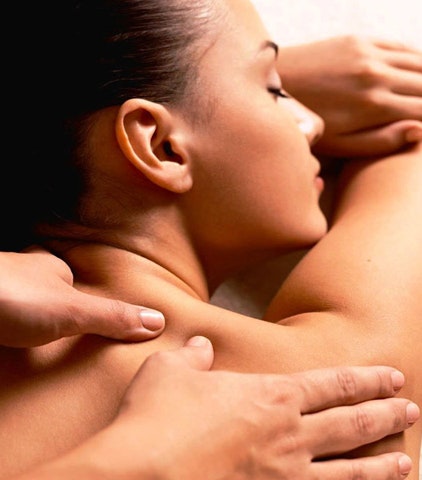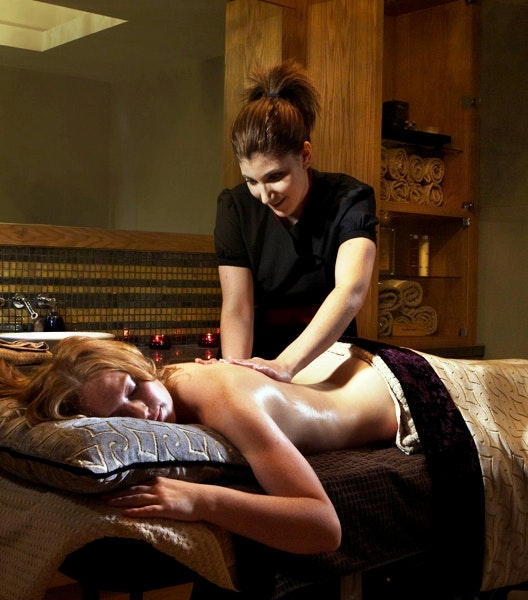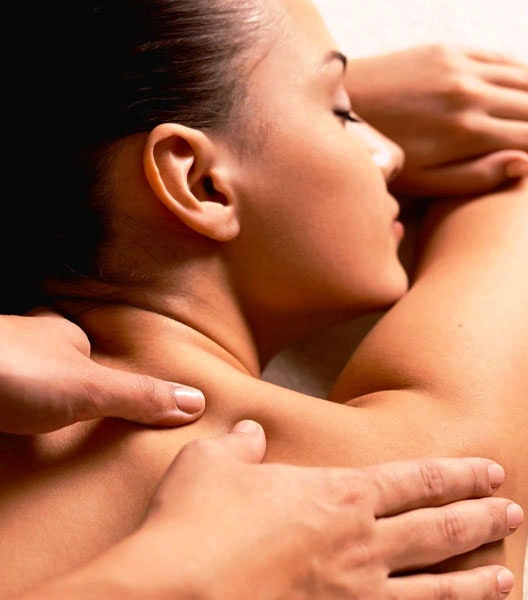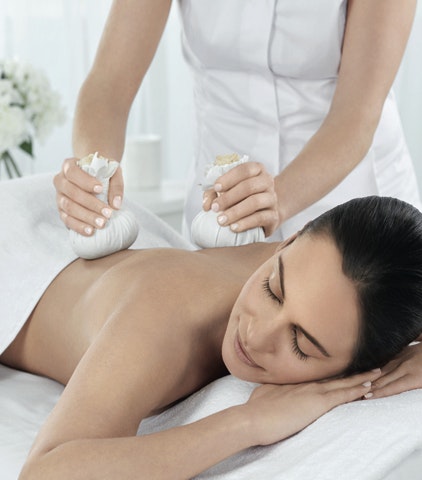
Spa Facial Treatments
If you’ve yet to experience a spa day or spa break or are simply new to facials, you’ll find everything you need to know about the beautifying treatment in this guide.
We will cover how a facial is performed, the different types of facial treatments available and the possible health and beauty benefits. We also provide some aftercare tips which can help you to get the most from your spa treatment.
What is a spa facial?
Facials are one of the most popular treatments for spa-goers and are often included as an option in our spa packages.
A facial is a beautifying skin treatment that cleanses pores, exfoliates dead skin cells, hydrates and moisturises the skin, and treats common skin concerns with a customised regime. Facials are designed to boost the immediate appearance and overall health and longevity of the skin.
Nearly all facial treatments comprise deep cleansing and exfoliation stages. The products and tools used depend on the type of facial - and the spa venue - selected. You can enjoy this indulgent treatment on its own or as part of a pamper day or overnight spa break.
What are the benefits of facial treatments?
The pampering experience of a beautifying facial can provide multiple health and beauty benefits.
A regular facial is ideal for maintaining good skin health and can leave you with a radiant complexion. There are many types of spa facials to choose from. For example, some aid skin elasticity, preventing sagging, wrinkles and other tell-tell ageing signs, while others help to combat dry skin ailments or acne.
Even the lucky few of you with perfect skin will enjoy the indulgent pleasure of a facial, which utilises gentle massage techniques. Facial massages are not only relaxing; they also boost circulation and blood flow, helping the skin on your face to self-heal while re-energising your mind.
Types of spa facial treatments
There are a number of different spa facial treatments available across the 500+ venues we represent nationwide. Some of the most popular treatments include:
Anti-ageing eye treatments
The delicate skin around the eyes is particularly susceptible to the ageing process. This area is often targeted as part of the different facials listed here, but many spas offer specific anti-ageing eye treatments, too (please enquire with your selected venue ahead of your visit).
Balancing facials
Ideal for those with combination or blemish-prone skin, balancing facials are the enemy of unsightly, enlarged pores. Undergoing one will help to regulate your skin’s oil production - a great help if you suffer with the effects of hormone imbalance.
Enzyme facials
While many of the chemical peels offered by medical spas are capable of damaging live skin cells if applied incorrectly or for too long, the proteolytic exfoliants in enzyme facials can only destroy dead cells, making them a gentler choice. These condition-based facials target acne, and dry, dull, tired and/or greasy skin, and provide an instantly younger appearance without temporary redness, making them a celebrity favourite.
Firming facials
Designed to reduce the appearance of wrinkles and fine lines, firming facials often see tightening skin gels used. Painless, anti-ageing electrotherapy is also becoming more common within this category of facial. Regular treatment offers the best results, but improvement is evident after a single session
Hydrating facials
Designed to increase the skin’s moisture levels, hydrating facials are an ideal winter skin treat. Nourishing, collagen-infused lotions are often used to rid the skin of dry and flaky patches, and to ‘plump’ the skin for a youthful appearance.
Peel facials
This term is used to describe a variety of facials designed to remove one or more layers of the skin to reveal a brighter complexion with less blemishes. The chemical peels offered at medical spas are the most obvious example, but an increasing number of peel facials featuring natural ingredients are becoming available. Learn more about peel facials
Pro-collagen quartz lift facial
This Elemis anti-wrinkle facial provides instant results and is offered at many of the Champneys spas represented by SpaSeekers, and more venues besides. Padina pavonica marine algae, precious quartz minerals and massage techniques designed to lift, tone and boost collagen production in the skin are applied, while you unwind in a full body massage chair.
Rejuvenating facials
An instantly younger appearance is the aim of the rejuvenating facial. These work to promote the growth of new skin cells and collagen production. An electric (pain-free) exfoliating brush might be used to remove dead skin cells and electrotherapy is often used in conjunction.
Resurfacing facials (aka lasabrasion or laser peel)
Typically offered by medical spas, resurfacing facials utilise laser therapy, and/or a chemical peel and microdermabrasion to rid the skin of dead cells to the greatest possible degree to reduce the appearance of wrinkles and skin irregularities, such as discolouration and acne scars. Collagen production is also boosted. An increasing number of spas now offer non-laser resurfacing facials promising similar results.
Soothing facials
Considered a godsend for itchy, flaky or otherwise irritated skin (but enjoyed by spa guests with skin of all types), soothing facials usually feature natural oils to help to calm redness and promote the skin’s natural protective functions
What to expect during a spa facial treatment
Treatments may vary depending on the spa you are visiting and the type of treatment you have chosen. To find the exact details of your chosen facial, you can contact your selected spa or visit their website for more details.
Typically, a spa facial treatment consists of the following steps:
Step #1 - Facial cleanse: Your therapist will gently massage a cleansing milk (or similar product) into the skin and decolletage. After a few minutes, the cleanser will be removed using warm water and a facial sponge or cotton pad.
Step #2 - Skin consultation: Once patted dry, your therapist will cover your eyes and take a closer look at your skin using a lighted magnifying glass. This allows the therapist to determine the condition of your skin, so that your treatment can be adapted to meet your skin’s requirements. You may be asked questions about your skincare routine or lifestyle at this stage.
Step #3 - Facial exfoliation: A suitable exfoliant will then be applied to the skin. Your therapist will use their hands or an exfoliation brush to help remove any dead skin cells during this stage.
Step #4 - Facial steam: Steam - or a hot towel - may be introduced to the face while the exfoliation cream is still present, or once it has been removed by your therapist using pads/sponges. The addition of heat loosens pores and encourages impurities to be flushed via the sweat ducts.
Step #5 - Extraction: The spa therapist will then remove any blackheads and whiteheads from your skin using an extraction tool - a steel instrument which allows easy removal of built-up sebum from pores. Your face will be cleansed again once any impurities have been extracted.
Step #6 - Massage: Next, your therapist will massage your face (usually applying a refreshing oil beforehand) to encourage blood flow and the self-lubrication of your skin. During this stage, your therapist may also massage the shoulders and scalp.
Step #7 - Mask application: A clay or cream-based mask chosen to meet the needs of your skin will then be applied to your face. You may receive a further massage at this point to help the mask work its ‘magic’, or you may be left to relax for five minutes. This is a perfect opportunity to clear your mind and enjoy being pampered!
Step #8 - Serum application: Once the mask has been washed from your skin, a protective, speciality serum (such as one for ageing, or blemish-prone, skin) is usually applied. Some spas may also include eye gel or lip care during this stage of the treatment.
Spa facial aftercare tips
The following advice will ensure you get the most from your spa facial and minimise the chances of experiencing any irritation after your treatment:
Avoid any further skin treatments for at least 48 hours after your facial (increase this to 72 hours for exfoliant products and scrubs)
Avoid excessive sunlight and heat sources (such as saunas) for a minimum of 48 hours
Try to keep makeup application to a bare minimum for the first 24 hours following your facial - allow your skin to breathe and take full advantage of the treatment
Drink plenty of water to aid the flushing of toxins from your skin
You can purchase full-size/trial-size versions of the products used during your facial at the majority of spas, meaning you can repeat the regime recommended by your therapist at home
Facials which use laser technology or chemicals have their own specific aftercare requirements - always follow the advice provided by your therapist
Spa facial FAQs
How should I prepare my skin for a facial treatment?
While you can continue to follow your usual skin routine ahead of your spa visit, you should avoid exfoliating masks and scrubs several days before your facial to prevent the risk of raw, or otherwise uncomfortable, skin caused by over-treatment.
You should try to arrive for your facial makeup-free. While the therapist may be happy to remove makeup for you, this extra step will need to be completed within your overall treatment time. Be sure to arrive promptly too, to get the very most from your appointment.
What should I wear to a spa facial?
You are free to wear what you would like to the venue (within the spa’s own rules). Comfortable, loose clothing is recommended. You are likely to be asked to change into a robe for your treatment but you can wear underwear or swimwear underneath.
Find out more about dressing for a spa in our guide, What should I wear to a spa?
How long does a spa facial take?
Generally, a spa facial will last between 60 and 90 minutes. There are also express facials available that last around 30 minutes. The steaming and extraction stages are usually omitted for the shorter version of the treatment. These can be a good introduction to spa facials.
We recommend checking with us or your chosen spa ahead of time to ensure you understand the specifics of the treatment.
Are skin breakouts (i.e. spots) common after undergoing a facial?
Some spa-goers report the appearance of new spots within 48 hours after a facial. This can be a fairly common reaction. It simply indicates your skin is detoxifying itself, and a glowing complexion should soon follow.
While spots are far from guaranteed, you may want to schedule your facial a minimum of four to five days before any important event in order to allow your skin plenty of time to recover.




